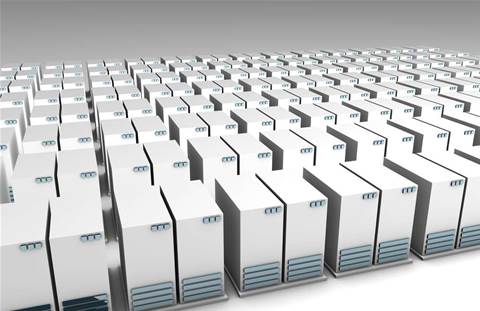Billions of dollars and gigawatts of power could be saved globally if datacentres adopted a few simple measures, energy experts told the Emerging Technology conference in Boston.
Datacentres account for 1.5 per cent of US energy consumption, a figure expected to double by 2013 unless action is taken. Most is used by old-style business datacentres which waste as much power on cooling as they use to drive their servers.
Some wastage is due to servers running at full power even when they are not being fully used – despite the fact that recent chips from Intel and AMD can power down as the compute load drops.
“In most datacentres these power-saving features are switched off,” said Kenneth Brill, executive director of the Uptime Institute. And this at a time when power costs are soaring.
Cloud computing centres are inherently more energy efficient because their servers are more intensively used.
“In raw economic terms the benefits of the cloud are compelling, whatever other issues there might be,” said Jonathan Koomey, an energy specialist at Lawrence Berkeley National Laboratory.
Companies such as Google and Yahoo, which have huge energy bills, have also introduced massive savings in the facilities outside the server boxes.
Scott Noteboom, director of datacentre operations at Yahoo, said cooling costs at his company’s new cloud facility in upstate New York had been cut to one per cent of the power budget, compared with up to 55 per cent on the servers it used previously at old-style co-location facilities across the world.
Some savings stemmed simply from using more efficient transformers, UPS boxes and individual server power supply units, all of which tended to be inefficient if they dated from less power-conscious days.
In addition each block housing servers at the new centre was sited and oriented to take advantage of winds coming off the great lakes. “The entire building is designed as an air handler...We can control where the air goes in and out according to the wind direction,” said Noteboom.
The result is that the building needs only cheap, clean evaporative cooling. Also the temperature is stabilised at a relatively high 80 degrees Fahrenheit (27C), again reducing the need for cooling.
Google thermal technologies architect Chris Malone said his company makes similar use of air cooling by housing racks of servers in containers in which hot air passing to radiators is strictly segregated from incoming cold air.
Google also takes care to eliminate inefficiencies in the power chain from electricity grid to server. It does away altogether with an exterior UPS boxes; instead the task is done by a battery inserted on the DC side of the power supply of each 1U rack server.
Malone explained that the standard metric for datacentre power efficiency, called the PUE, is derived by dividing the total power used by the facility by the power used by the IT equipment. Legacy equipment had a PUE of about 2.0; Google units average 1.19 – almost twice as efficient.
He estimated that companies could achieve a PUE of about 1.4 simply by using more efficient UPS units and transformers now available off the shelf.
The news about older datacentres was not all bad. Koomey said efficiencies vary with the tasks being done and that before getting too worked up about wasted energy, people should look at the whole picture.
“We looked at the energy costs of downloading some music as opposed to buying it on a CD. Downloading was between 40 per cent and 80 per cent more efficient... Bits are far cheaper to move around than atoms.”
Experts point way to greener datacentres
By
Clive Akass
on Sep 26, 2009 9:12AM

Got a news tip for our journalists? Share it with us anonymously here.
Tags:
cent collaboration datacentres energy hardware networking per power servers software technology
Partner Content

Guiding customers on the uneven path to AI adoption

MSPs with a robust data protection strategy will achieve market success

Shared Intelligence is the Real Competitive Edge Partners Enjoy with Crayon

How Expert Support Can Help Partners and SMBs Realize the Full Value of AI
.png&h=142&w=230&c=1&s=1)
How mandatory climate reporting is raising the bar for corporate leadership






.jpg&w=100&c=1&s=0)
_(8).jpg&w=100&c=1&s=0)










